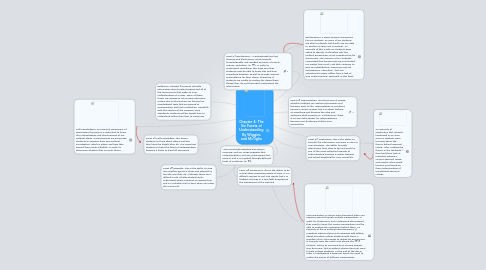Chapter 4: The Six Facets of Understanding By Wiggins and McTighe
by Bobbi Kezirian

1. Facet #1 Explanation: -"Sophisticated and apt theories and illustrations, which provide knowledgeable and justified accounts of events, actions, and ideas" (p. 85). In order to understand something, this facet says that students must be able to know why and how something happens, as well as provide support and evidence for their claims. Therefore, if students are unable to explain (by doing these things) they do not thoroughly understand the information.
2. “The word understanding has various meaning, and our usage suggests that understanding is not one achievement but several, and it is revealed through different kinds of evidence” (p. 82).
3. Facet #4 Perspective: This is the ability to be critical when examining points of view. It is a difficult concept to put into words, but it is looking at things in a new light questioning the motivations of the material.
4. Facet #5 Empathy: This is the ability to step into another person's shoes and attempt to feel the way they do. Although this is very difficult to do it helps students truly understand where someone is coming from and is a valuable tool to have when you enter the real world.
5. Facet #6 Self-Knowledge: This forces students to think about where and why they have the beliefs they do. It is important students to have this facet of understanding because it helps to ward off ignorance.
6. Self-Knowledge is an essential component of government because it is important to know the rationalization and development of our political ideals. In government we encourage students to examine their own political socialization, which is where and how they gained their political beliefs, in order to determine whether they are truly theirs.
7. Reflection: Chapter 4 covered valuable information about understanding and all of the components that make up true understanding of a topic. Many of these facets are missing in our current education system due to the fact we are focused on standardized tests that are geared at memorization and fact recollection. Hopefully with the coming of the Common Core Standards, students will be taught how to understand rather than how to memorize.
8. Explanation is a major missing component for my students. So many of my students are able to identify, but hardly any are able to explain (at least not in writing). An example of this is why my students were asked to identify and explain why the Federal Bureaucracy is not considered to be democratic. The majority of my students responded that bureaucrats are not elected. No matter how much I ask they continue to give me identification responses and not explanations. Therefore, I feel our educational system suffers from a lack of true understanding, especially in this facet.
9. Facet #2 Interpretation: This facet aims at seeing whether students can analyze information and bringing texts to life. Interpretation is not about having a correct answer, but it is about looking at something and drawing key idea and analyzing what is going on. Furthermore, there is no one right answer for interpretations because your background alters your perspective.
10. Facet #3 Application: This is the ability to transfer the information you learn in class to new situations. The ability to apply information from class to the real world is one of the most important aspects of understanding because it makes learning and school beneficial for your actual life.
11. An example of application that recently happened in my class was my students were learning about the theory behind approval rating. After reading the theory in the textbook I then had them look at President Obama's current approval rating and predict what would happen next based on their understanding of presidential approval ratings.
12. Learning history is always more beneficial when you examine events through multiple perspectives. In order for students to truly understand the material, they need to know the various perspectives and be able to analyze the motivation behind them. An example of this is political advertisements. If President Obama places and campaign add talking about providing college students with loans, a member of my class needs to realize his perspective is trying to gain the youth vote during the 2012 election. Where as someone he is running against may be saying that President Obama does not want to help college students. At the end of the day in order to understand a historical event you need to realize the power of different perspectives.


